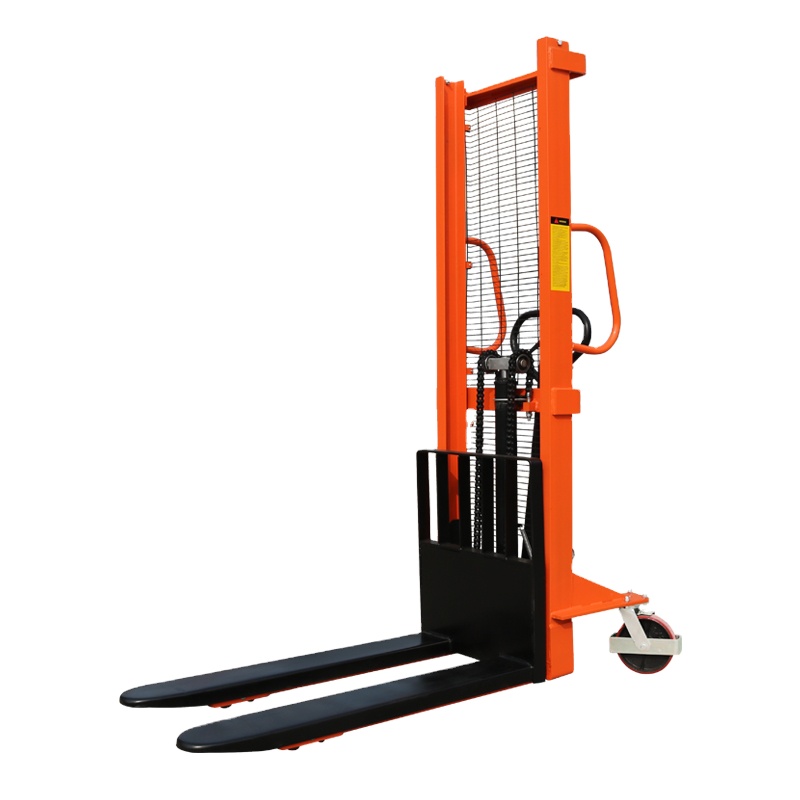The hydraulic hand forklift typically handles sudden stops or changes in direction through its braking system and steering mechanism. Here’s how it generally works:
- Braking System: The forklift is equipped with a braking system, which could be mechanical or hydraulic depending on the model. When the operator applies the brake pedal or lever, the system engages, slowing down or stopping the forklift’s movement. This helps to prevent sudden stops that could cause loads to shift or fall.
- Steering Mechanism: The steering mechanism allows the operator to change the direction of the forklift smoothly. This could be achieved through a steering wheel or handlebars, depending on the design. The operator can maneuver the forklift around obstacles or make turns safely.
- Operator Skill: Additionally, the operator’s skill and experience play a significant role in how the forklift handles sudden stops or changes in direction. A skilled operator anticipates changes in the environment, adjusts speed accordingly, and applies brakes and steering inputs smoothly to maintain control of the forklift and its load.
Overall, a combination of braking systems, steering mechanisms, and operator proficiency ensures that the hydraulic hand forklift can effectively handle sudden stops or changes in direction while maintaining safety and stability.
How does the forklift perform in wet or rainy conditions?
The performance of a hydraulic hand forklift in wet or rainy conditions can vary depending on several factors, including the design of the forklift, the condition of the operating environment, and the precautions taken by the operator. Here are some general considerations:
- Traction: Wet surfaces can reduce traction, potentially affecting the forklift’s ability to grip the ground. Some forklift models may have features like special tires or traction control systems to improve traction in wet conditions. However, operators should exercise caution and reduce speed to compensate for reduced traction.
- Braking: Wet or rainy conditions can affect the effectiveness of the forklift’s braking system. hydraulic hand forklift Operators may need to apply brakes earlier and more gradually to compensate for increased stopping distances. Regular maintenance of the braking system is essential to ensure optimal performance in all weather conditions.
- Visibility: Rain can reduce visibility, making it more challenging for operators to see obstacles, pedestrians, or other hazards. Forklifts equipped with windshield wipers and clear visibility from the operator’s seat can help improve visibility in wet conditions. Additionally, operators should use caution and be extra vigilant when operating in rainy weather.
- Load Handling: Wet conditions can affect the stability of loads and the condition of pallets, especially if they become slippery. Operators should inspect loads and pallets for damage and take precautions to secure them properly. Additionally, operators should be aware that wet surfaces may affect the forklift’s stability, particularly when lifting or lowering loads.
- Corrosion Protection: Exposure to moisture can accelerate corrosion on metal components of the forklift. Regular cleaning and maintenance, including applying protective coatings or lubricants to vulnerable areas, can help mitigate the effects of corrosion and prolong the lifespan of the forklift.
Overall, while hydraulic hand forklifts can generally operate in wet or rainy conditions, operators should exercise caution, be aware of the potential challenges, and take appropriate precautions to ensure safe and efficient operation. Regular maintenance and adherence to safety guidelines are crucial for optimizing performance in all weather conditions.
